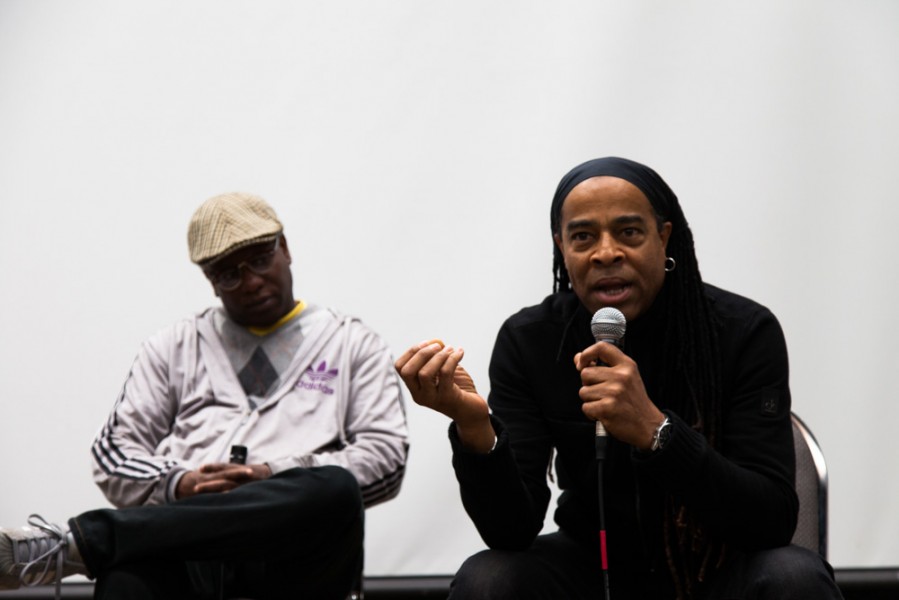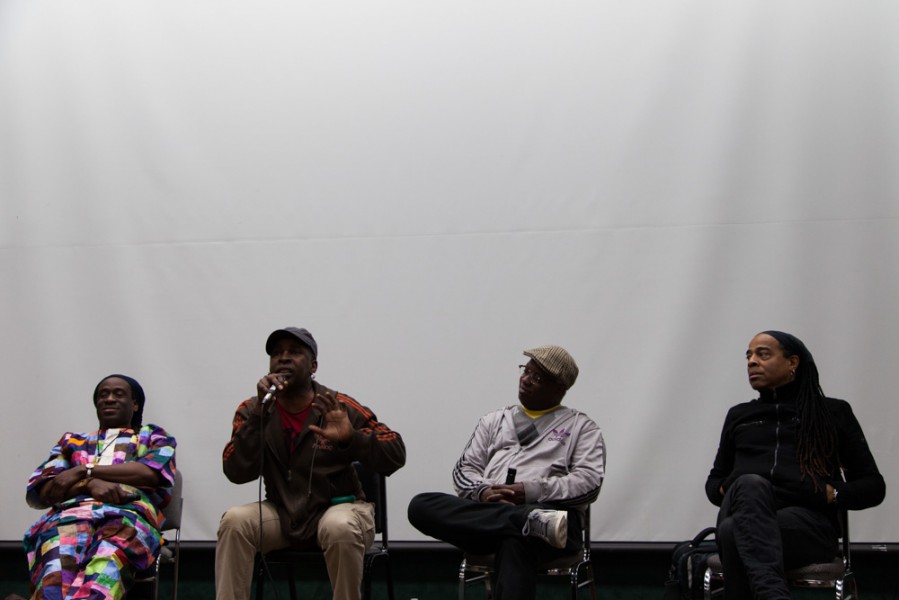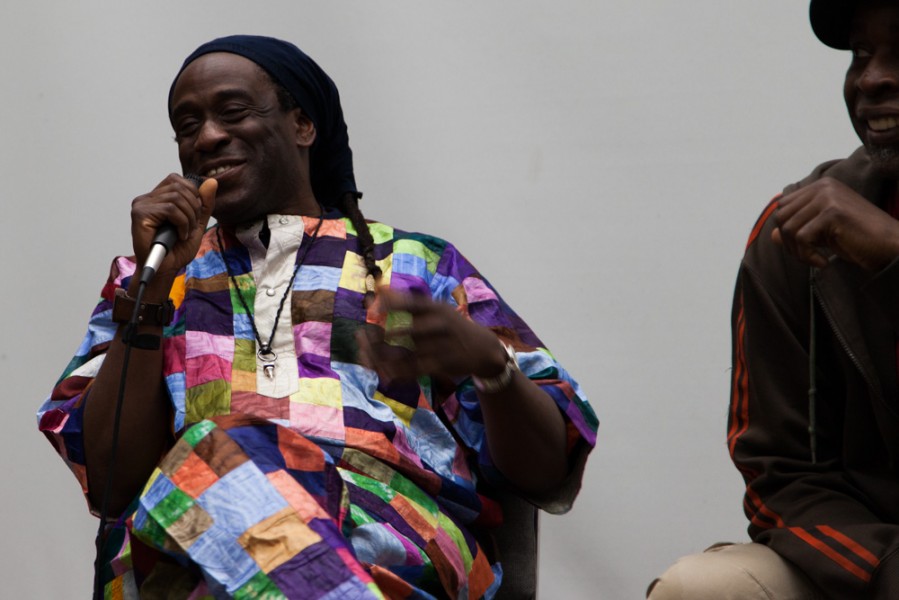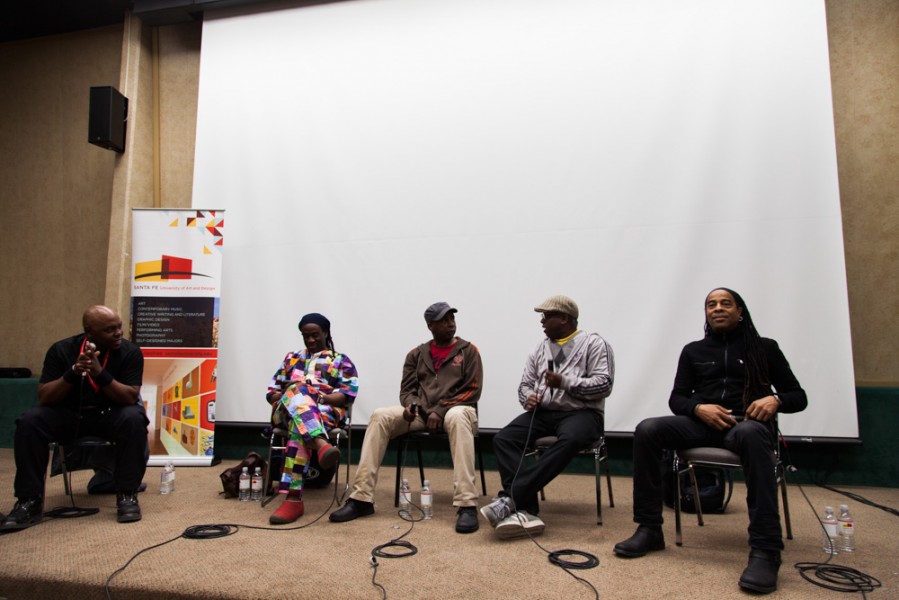Tags
Related Posts
Share This
Living Colour Forum
On April 19, Living Color sat down for a panel with students and faculty, as a prequel to its concert with SFUAD’s Artists for Positive Social Change. They led the room like those rare teachers who excite students with new ideas. At 10 a.m. on a Saturday, I was not ready to learn. However, I quickly found myself leaning into every lesson.
All four bandmates—Doug Wimbish, Corey Glover, Vernon Reid and Will Calhoun—found themselves in New York in the ‘80s, either from birth or fateful travels. The group of artists reminded me of the New York my mom is always talking about: a New York where networking meant just knowing your neighbors—where the kid across the street made his way into being a famous musician that you still just knew as the kid across the street. A New York of playing instruments in a tiny rehearsal space and having a deep respect for those who paved the way, hoping for a sliver of advice on a hot city stoop.
My mother always talks nonchalantly about famous people she knows, just from walking around and doing shows or going out in ‘70s NYC (“Oh, that guy? Yeah he called me after this show”…or “I took a taxi with him and we talked for ages”…or “he was my friend’s piano player for years, very shy…”). It sounds so simple, and Living Colour emphasized the importance of these friendships (it’s key that they called them ‘friendships’ rather than the more industry-known-term ‘connections’).
“Believing, listening, learning, sharing,” said bassist Doug Wimbish. “The music business [is really the] success [found] in the friends you have: be around the kind of people who are doing what you want to do.”
Wimbish began playing after he found an old mandolin in a neighbor’s garbage. It had eight strings, and four of them broke, which is how he learned to play bass. He worked as a studio musician at age 18 for All-Platinum Records, now known as Sugar Hill Records. He learned from the foremost musicians who came through the door each day, and always hung on their words of experience.
“I realized I wanted to create [while] I sat at the foot of people I knew were doing it. The best lessons are being in a rehearsal,” agreed lead vocalist Corey Glover. “Sometimes a stranger can inform so much of what you do or how you end up doing it.”
Perhaps projecting the clearest image of this collaborative New York, Bronx-born drummer Will Calhoun spoke about a reverence for elders and having a family in the neighborhood. For him, it was a place where there was no musical wall. “Everyone’s [musical] gear was at our house, I had a chance to watch how it was…how sometimes the great players with the bad attitudes I never heard about [later in the business]. I could watch what it was to be and not be a professional.”
After going to a fateful concert and meeting Miles Davis backstage, Calhoun started working at a gas station – Christmas, New Years, and time and a half. He left a picture of his dream drum set on his mirror and his goal was to earn enough to buy it. It was the drums he ended up using at the Berkley College of Music; it was the drums he used on the first album for Living Colour.
As I began to think of the New York I know, and the times I’ve felt both connected and extremely disconnected from its energy, guitarist Vernon Reid talked about a collective that expands the limits of meeting on the street. “Everything’s happening right now—all over we are part of something much bigger…someone’s playing their first note right now, and someone’s playing their last.”
There’s a transformative aspect to art, there’s a dialogue that crosses oceans and barriers. Whether or not I think New York is still the place it used to be, whether or not it’s an open and welcoming environment, I can still seek out and hear the possibilities of participation. I can go to one of the hundred concerts, or galleries, or plays. New York wasn’t built off of Disney and Times Square; it was built off of hungry and excited artists who wanted to find a community. They wanted that collective to be placed in a room so that it could grow to its highest potential and could be spread across the world.
The group of musicians, after more than a decade of playing, remain excited about learning every day; Vernon Reid explained how guitar is a “grid of possibilities” he is still discovering. This learning process is to be shared with others, to expand the world of music. “You die with the information if you don’t share it. You kill it. We don’t own the art…we create it.”












 Jackalope Magazine is the student magazine of Santa Fe University of Art and Design. Building on the interdisciplinary nature of our education, we aim to showcase the talent of our university and character of our city.
Jackalope Magazine is the student magazine of Santa Fe University of Art and Design. Building on the interdisciplinary nature of our education, we aim to showcase the talent of our university and character of our city.
Recent Comments